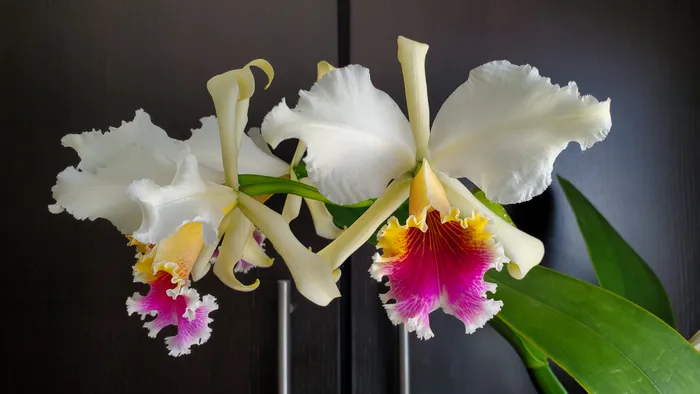Cattleya rex
Published February 4, 2024
Last updated October 26, 2024

Photo: Cattleya rex ‘Inti’ HCC/AOS
A few things make this species more difficult than other Cattleya:
- New roots only emerge from once the new growth is complete. If you lose them, you have to wait till the next growth completes. Chadwick mentions in his book that potting the rootless plant in damp, tightly-packed sphagnum will stimulate rooting, but I have not tried it. Branching is another story. If the plant has some roots in tact, they can branch and grow profusely during the reestablishment period.
- The entire plant needs air moving around it constantly. Water left on leaves can cause black spots. Roots that stay wet for too long (even a day can be too much) will die and rot. Mounting will help with this, but of course, you’ll have to water more often. That said, a very successful rex grower in Peru, Sr. Quevedo, has his rexes in about 5 cm of sphagnum in the bottom of a clear plastic pot. I would imagine that the sphagnum is allowed to dry completely between waterings, but offers the plant plenty of moisture in the meantime.
- They will not tolerate cool temperatures for long. Warm days and cool nights all year are essential. The average temperature range for their native habitat is 18°C low and 28°C high year round.
In my conditions, new growth begins with the New Year, and matures in spring. Buds are usually pushing out of the sheaths before the leaf has fully developed. Flowers last about two weeks and there is a faint rose/vanilla fragrance. I’ve had them bloom as early as March and as late as August. Sometimes the plant will start another growth that completes in the autumn, but it is usually smaller and does not bloom.
 Home
Home